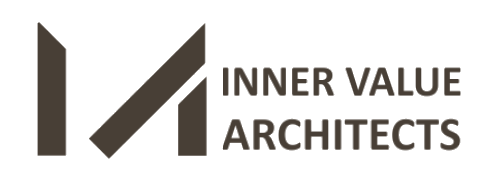In today’s world, we’re all looking for ways to be...
As cities grow denser and more complex, the concept of urban living is undergoing a radical transformation. Gone are the days when urban residences were simply about providing basic shelter in convenient locations. Today, innovative architects are redefining urban living. This change is driven by urban growth, lifestyle changes, technology, and the need for sustainability. The result is innovative and diverse residential designs that transform skylines and how we live in our communities and cities. In this blog post, we’ll explore eight innovative residential designs that are redefining urban living. Each of these concepts offers a unique perspective on the challenges and opportunities of city life, providing solutions that are as creative as they are practical.
Whether you’re an architecture enthusiast or simply someone curious about the future of urban living, these designs offer a fascinating glimpse into the homes of tomorrow. Join us as we dive into these cutting-edge residential concepts and discover how they’re setting new standards for comfort, sustainability, and community in our ever-evolving urban landscapes.
Cutting-edge Home Designs Changing Urban Landscapes
Urban living is undergoing a profound transformation as architects and designers push the boundaries of residential design. From sustainable practices to technological integration, here’s a look at some of the most innovative residential designs redefining urban living today:

1. Vertical Forests
Vertical forests are a revolutionary form of urban architecture that blends nature seamlessly with high-rise living. These innovative structures feature facades adorned with a variety of trees, shrubs, and plants. Beyond aesthetics and luxury home design, they offer ecological benefits such as cleaner air, enhanced biodiversity, and natural building insulation. This living design not only connects residents to nature but also mitigates urban heat and reduces carbon emissions. As cities focus on sustainability and livability, vertical forests show how urban development can harmonize with nature, potentially transforming cities into green havens that benefit both people and the environment.
2. Adaptable Micro-Apartments
Micro-apartments are small yet versatile living spaces that maximize efficiency with multifunctional furniture and smart designs. Compact units, typically 200 to 400 square feet, optimize space with smart design and versatile furniture. With the help of versatile furniture you can convert your living area into a bedroom at night with a fold-down bed, while dining tables and kitchens feature space-saving solutions. Some include movable walls or modular furniture for customizable layouts. Despite their size, these apartments often feature upscale finishes and smart technology, offering a stylish, efficient living option in city centers.
3. Smart Homes
Smart homes revolutionize modern living with unmatched convenience, efficiency, and security through advanced technology integration. Homes integrated with latest technology give you ease as you can use remote control and automate lighting, temperature, entertainment, and security systems using interconnected devices. This optimization of energy usage cuts utility costs and supports environmental sustainability. Enhanced safety features of home like surveillance cameras and smart locks provide real-time monitoring and alerts. As technology evolves, smart homes are essential in creating a connected and responsive living experience that meets the evolving needs of homeowners in today’s digital age.
4. Mixed-Use Developments
In mixed-use developments, you have a combination of residential, commercial, and often cultural spaces within a single community, offering a blend of convenience and vibrancy. When you integrate smart home technology, it enhances your residential experience by providing automated systems for lighting, temperature control, and security. Beyond individual units, smart technology optimizes shared spaces and amenities, promoting efficiency in energy consumption and maintenance. This integration not only enhances your living standards but also fosters a dynamic community environment where work, leisure, and living converge seamlessly. Green spaces and sustainable home designs further align these developments with modern urban planning ideals, prioritizing livability and environmental stewardship.
5. Net-Zero Energy Homes
As sustainability becomes increasingly important, net-zero energy homes are leading the way in residential design by achieving a crucial balance: they generate as much energy as they use each year. You’ll find these homes employing advanced renewable energy systems and highly efficient design principles. Solar panels are a common sight, capturing sunlight, and some even incorporate small wind turbines to diversify energy sources. Inside, smart home systems, energy-saving appliances, and heat recovery systems work together to further optimize energy efficiency. Living in a net-zero energy home not only reduces carbon emissions but also liberates you from the grid, offering a progressive approach to urban living that’s both sustainable and forward-thinking.
6. Prefab and Modular Construction
Prefab and modular construction techniques have transformed residential development, offering a revolutionary approach to urban housing. These methods use off-site manufacturing to precision-craft building components in controlled factory settings, then assemble them quickly on-site. This streamlined process reduces construction times by 30-50%, ensuring higher quality, consistency, and minimal waste. Prefab homes are timeless home design now come with diverse customization options, from modern to traditional styles, blending seamlessly into urban settings. Modular systems allow for easy expansion or reconfiguration, adapting to changing needs or urban density requirements. As cities tackle housing shortages, prefab and modular construction provide efficient, scalable solutions for delivering sustainable homes rapidly and effectively.
7. Transit-Oriented Developments (TODs)
Transit-Oriented Developments (TODs) are a key urban planning strategy, tackling congestion and sustainability challenges. These neighborhoods center around public transport nodes like subway stations or bus stops, creating walkable communities with homes, shops, and parks nearby. By reducing reliance on cars, TODs promote sustainable travel options, cutting emissions and easing traffic. Mixed-use designs make for lively, round-the-clock neighborhoods where work and play are close at hand. Diverse housing options cater to all, while green spaces and pedestrian-friendly streets enhance community life. TODs offer a blueprint for sustainable urban growth, optimizing city space and fostering connected, resilient communities that meet modern needs.
8. Adaptive Reuse Projects
Adaptive reuse projects are revitalizing urban areas by transforming old structures into vibrant residential spaces. This innovative approach repurposes abandoned warehouses, old factories, and historic buildings while preserving their architectural charm. It reduces waste, maintains neighborhood character, and connects past with present. Original features like exposed bricks and large windows add unique character, attracting residents like you who appreciate unconventional layouts and historical significance. Whether it’s loft apartments in former mills or penthouses in old water towers, these projects offer diverse living options with personality and a story. By reimagining existing urban spaces, adaptive reuse contributes to creating sustainable cities, reducing sprawl, and fostering communities that blend history with modern living.
The Bottom Line
The landscape of urban living is rapidly evolving, with innovative residential designs addressing the complex challenges of modern city life. From vertical forests and micro-apartments to adaptive reuse projects and transit-oriented developments, these concepts are reshaping our urban environments to be more sustainable, efficient, and livable. As we navigate this exciting era of architectural innovation, it’s crucial to work with experts who understand these cutting-edge trends and can apply them effectively to individual projects. For those looking to embrace these forward-thinking approaches in their own developments or homes, consulting with Inner Value Architects can provide valuable insights and expertise. Experts can offer the best advice on implementing these innovative concepts, ensuring that your urban living space meets current standards and prepared for the future of city life.










